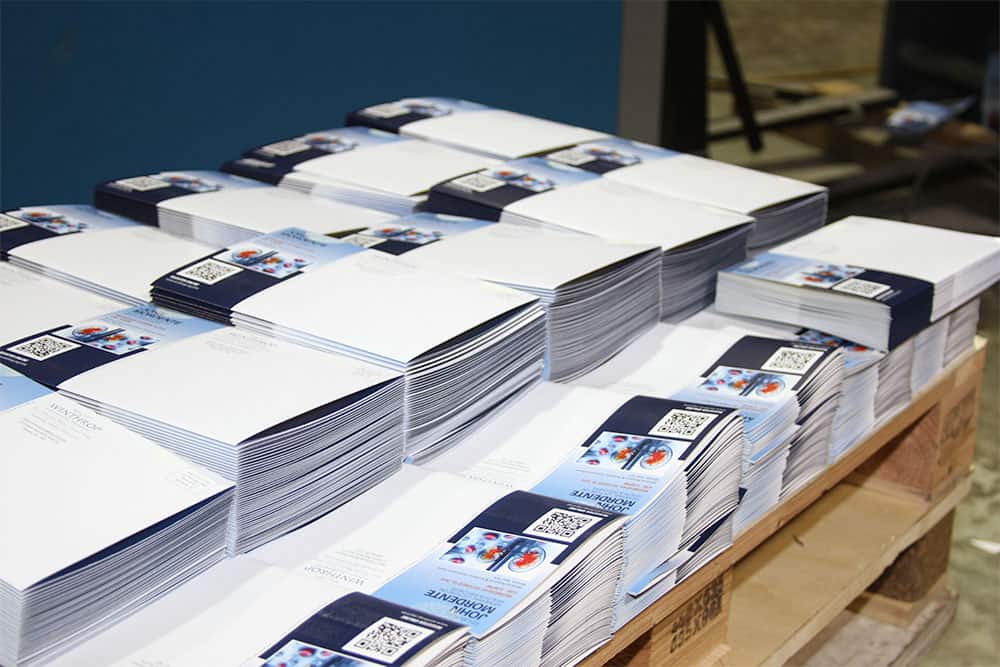When it comes to printing, choosing the right paper stock can make a significant impact on the final result. Whether it’s a brochure, business card, poster, catalog, or anything else you might use to promote your business, the type of paper used can make or break the design. That’s why it’s important to choose the right paper stock for your print project, one that complements the design and enhances its overall look and feel.
What is paper stock?
When we refer to a paper stock, or just stock, what we really mean is the type of paper we’re going to print on. 90% of the time, we look for 4 primary pieces of information: Basis weight, category / class / type, finish, and color (if you don’t specify a color, white is assumed). Here are some common examples of paper stocks we use and how they would be specified:
- 70 lb. Silk Text
- 50 lb. Offset
- 111 lb. Gloss Cover
- 24 lb. Linen – Baronial Ivory
Read on to find out what each of these means and how to pick the right paper stock for your print project.
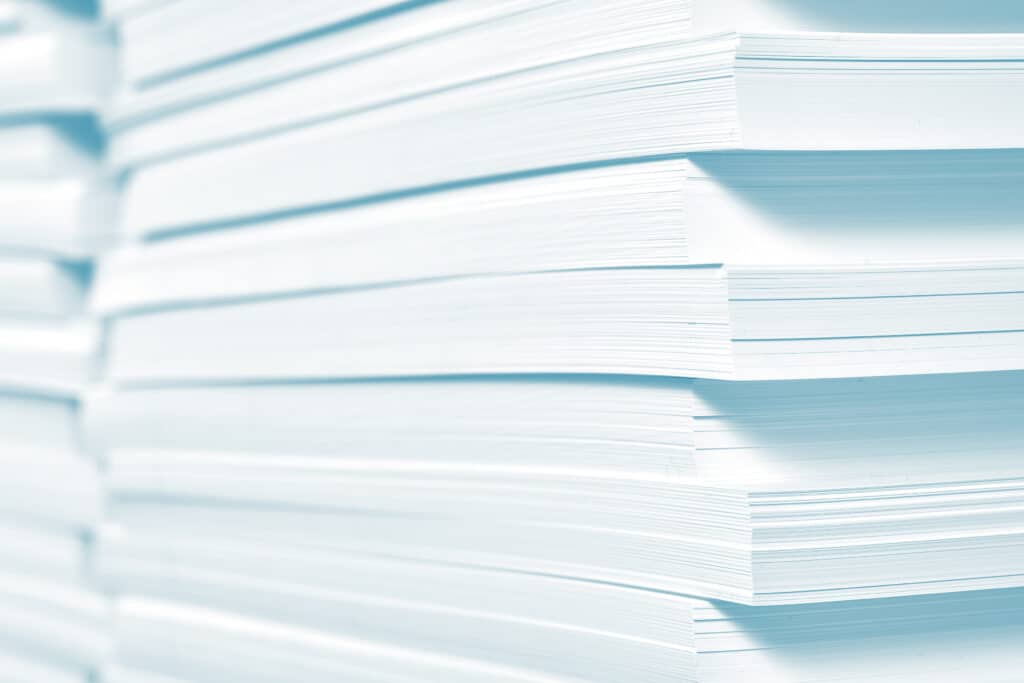
How to Choose a Paper Stock
Here are a few important factors to consider when selecting the right paper stock for your print project:
Purpose of the Print Project
Consider the purpose of your printing project. Is it for a brochure that will be used for a product launch or is it a business card that will be handed out during a meeting? Different purposes may require different types of paper stocks. For example, a brochure that will be used for a product launch may require a heavier weight paper stock to convey a sense of luxury and quality, while a business card may require a lighter weight paper stock to be easily carried in a wallet.
Budget
The cost of paper stock can vary greatly, and it’s important to consider the budget for your project. While some paper stocks may be more expensive, they often result in a higher-quality finished product. For example, a premium paper stock may have a more luxurious feel and better color reproduction, but it will also come with a higher price tag. On the other hand, a more economical paper stock may be just as suitable for a project with a smaller budget.
It’s also important to work closely with your printer when it comes to picking the right stock to meet your budget. Often they might have alternatives to ultra-high priced paper stocks that will provide the same end result you’re looking for at a fraction of the price.
Texture and Finish
The texture and finish of the paper can play a big role in the final result. Some common finishes include glossy, matte, and uncoated. Consider the design and the feel you want to convey with your print project. For example, a glossy finish can add a sense of sophistication and shine, while a matte finish can convey a more professional and understated look.
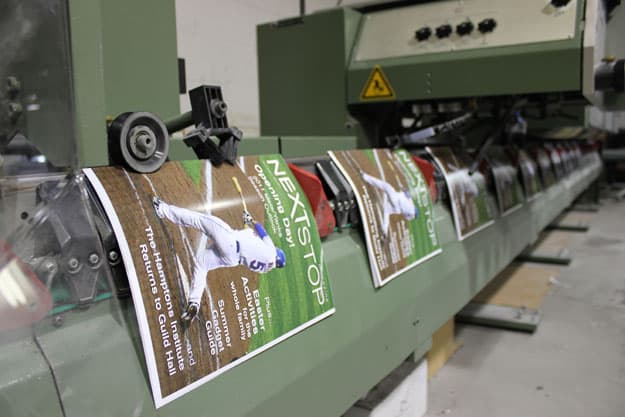
Weight
The weight of paper stock is measured in pounds and refers to the thickness of a single sheet. Heavier paper stocks are typically considered more luxurious and are often used for high-end print projects, while lighter weight stocks are more commonly used for everyday print materials. The weight of the paper stock can also impact the durability of the finished product. For example, a heavier weight paper stock may hold up better over time, while a lighter weight paper stock may bend or tear more easily.
Color
The color of the paper stock can also impact the final result. Consider the design and the colors used in the print project. Some paper stocks may have a yellow or cream tint that can impact the overall color of the design. For example, a cream-tinted paper stock may warm up the colors in a design, while a yellow-tinted paper stock may make the colors appear more muted. It’s also important to consider the color of the paper stock in relation to the other design elements, such as the ink color and images used.
Recycling
Finally, consider the environmental impact of your print project. Choose paper stocks that are made from recycled materials or are recyclable to help reduce your carbon footprint. By using eco-friendly paper stocks, you can ensure that your print project has a minimal impact on the environment and contribute to a more sustainable future.
FSC Certification
FSC, or the Forest Stewardship Council, is a non-profit organization founded in 1993 to promote the responsible management of forests worldwide. Buying FSC certified paper products ensures they are being sourced from responsibly managed forests. This means the forests where your paper comes from will continue to operate as forests used to grow, harvest, and regrow trees for use as a natural, renewable resource.
Before you buy any printing, ask your printer if the paper they use is FSC certified. At Searles Graphics, we only buy FSC certified paper, so you can be sure anything that comes out of our shop comes from responsibly managed forests.
Your Brand & Your Customers
At Searles Graphics, we serve a huge variety of customers and often deal with environmental organizations that want a stock that looks and feels “earthy” and presents a natural feel and slightly-muted look. We also deal with clients that sell high-end, expensive items that are best presented with sleek, high-gloss marketing materials. Consider what your brand represents and what your customers will connect with most.
Availability
The COVID-19 pandemic threw a wrench into the global supply chain that the world has still not recovered from. In the paper industry, while things are significantly better than they were 2 years ago, certain items – especially specialty paper items – are still difficult, if not impossible to get.
Because of this, it’s important to show some flexibility in your choice of paper stock and involve your printer as early as possible in the production process in the event your item isn’t available or will take some time to obtain.
Once you have considered these factors, you can narrow down your options and choose the right paper stock for your print project.
One of the primary decisions you need to make is about thickness. We have an in-depth guide on the meaning of paper weights here so we won’t go into too much detail on that here. In general, the thicker the stock, the more expensive it will be, both in material and production costs.
Categories of Paper Stock
Paper stocks can generally be broken down into a few different categories. This list is certainly not exhaustive, but should cover the vast majority of options.
Gloss

Gloss coated paper has a shiny, reflective surface. Traditionally, coated sheets were used for high-end print projects like magazines and product catalogs and were more expensive than uncoated options. These days, a number of factors have contributed to equalizing price between these options, and it’s more about personal preference and brand fit than anything else.
Any coated sheet will be more difficult to write on, which is why you’ll often see an uncoated subscription card inserted into a glossy magazine.
Silk
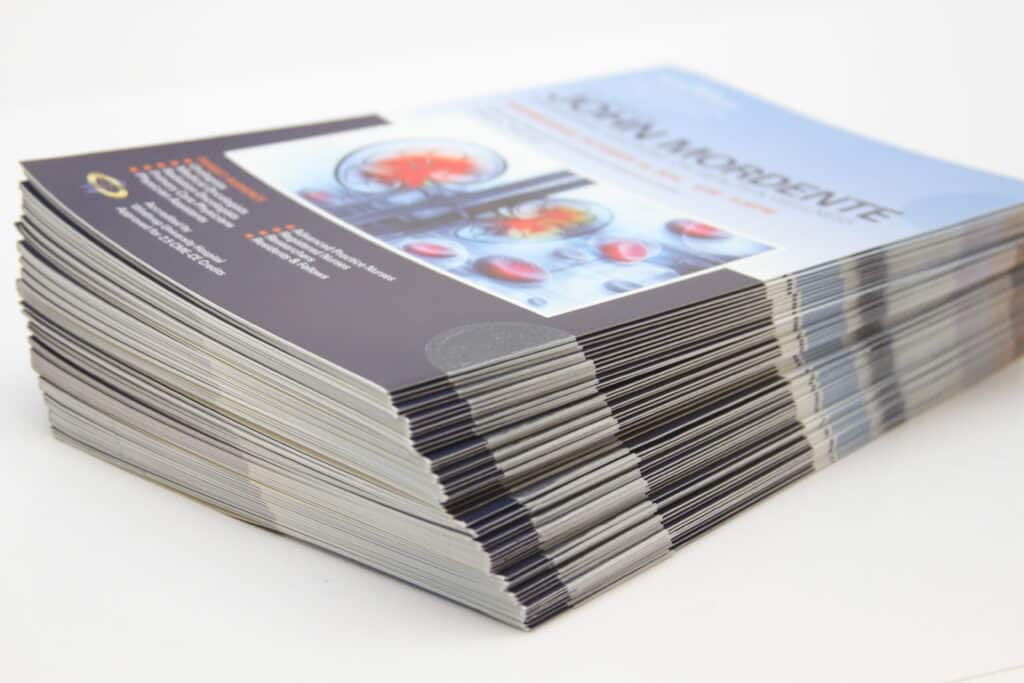
Silk is a type of coated paper that is sometimes referred to as “matte coated.” Silk coated paper is a great option for when you want the benefits of a coated sheet without the high shine of a gloss sheet.
Silk paper can offer a more understated look, and is also easier to write on that gloss stocks, making it a popular choice for everyday print materials like business cards and brochures.
I’m particularly fond of using silk sheets for digitally-printed materials, where the high gloss finish from the toner makes the printed areas pop when set against the flatter silk coating.
Offset / Uncoated
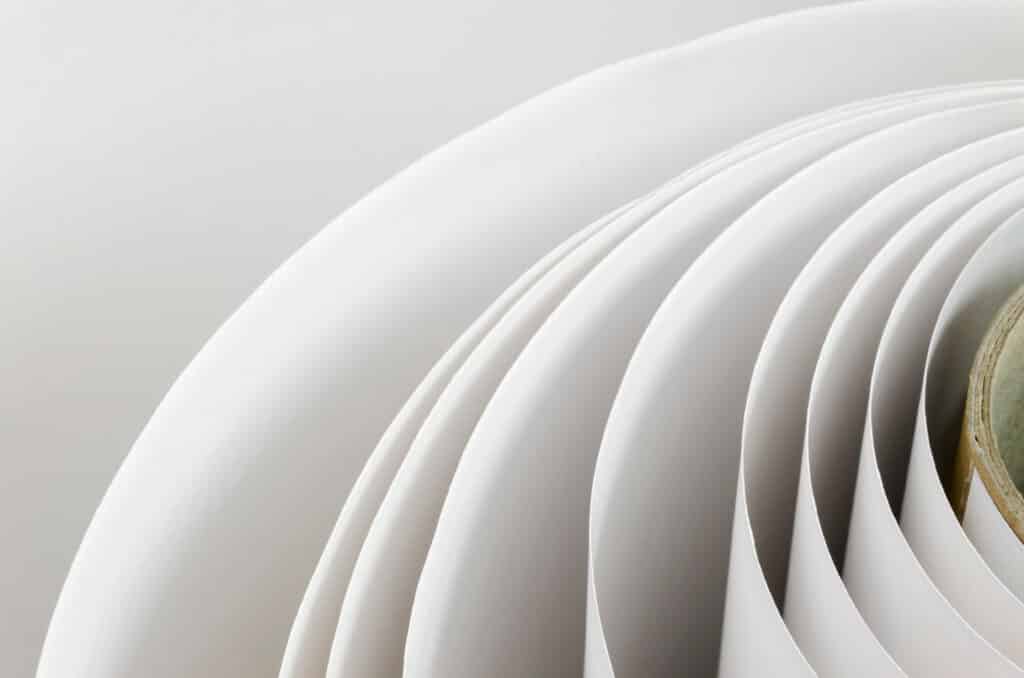
Offset, or uncoated paper has a natural, raw finish and is often used for projects that require a more organic or earthy feel. It is also a popular choice for eco-friendly print projects where a high percentage of recycled content is desired, and is very easy to write on.
While uncoated paper used to be the cheapest of these options, COVID changed all of that. Additionally, there are a number of ultra-high quality offset sheets on the market that can approach the smoothness of a silk coating (relatively speaking of course).
Cottons
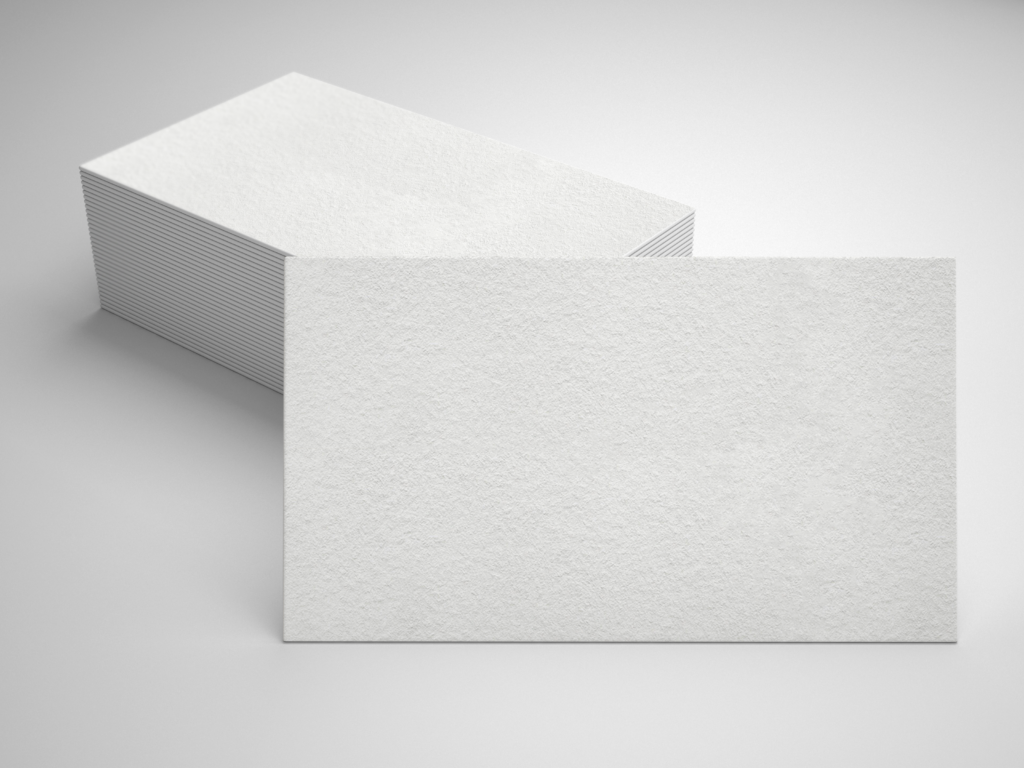
Cotton paper stocks are designed to last for a long period of time and generally used in projects where longevity is a key factor in the paper choice. COVID made these sheets impossible to come-by for a long time but they are slowly making a return to the supply chain.
Textured Finishes – Linen, Felt, & Laid
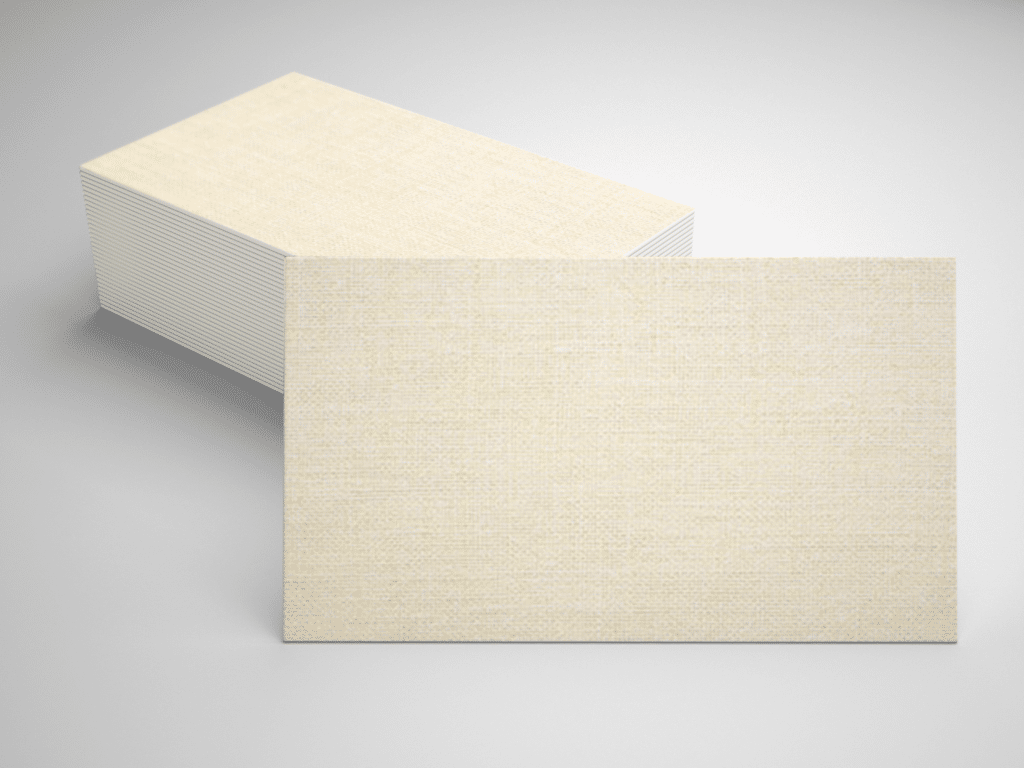
These papers have textured surfaces. We’ll save the details between the three for another day, but for now it’s important to note they are often used for smaller, high-end print projects like wedding or event invitations.
Textured finishes add a touch of luxury and sophistication, but they are generally more expensive than other paper stocks and not typically suitable for everyday print materials. The textures can also make them a little more difficult to print on, which adds to cost as well.
Kraft

Kraft paper has a natural, brown color and is often used for eco-friendly print projects. It is generally made from recycled materials and is recyclable, making it a popular choice for those who want their finished product to have an eco-friendly look. Kraft paper has a unique, rustic look that is well suited for projects with a more organic or earthy feel.
Synthetics
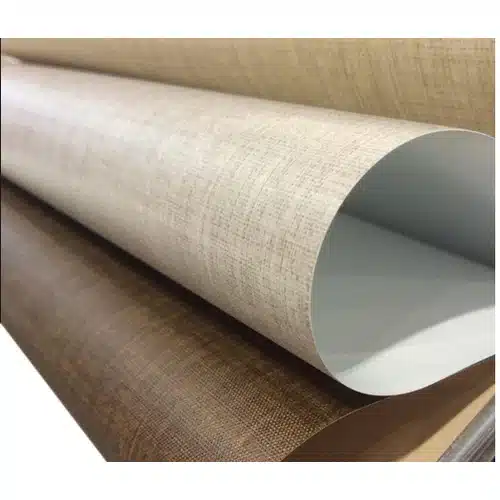
No discussion of modern day paper stocks would be complete without mentioning synthetics. Generally made of some type of plastic, synthetic stocks have filled an interesting niche in the printing industry. We often use synthetic stocks to print items like restaurant menus or ID cards so they can be wiped clean and are resistant to tearing. This is a cleaner alternative to lamination and provides a great finished look.
One Final Thought: Coatings
Modern printing also incorporates the use of coatings during the printing process. If you want a natural feel or you want the properties of the paper stock you chose to shine through, it’s best to leave the sheet uncoated.
Putting an aqueous coating, UV coating, or a varnish on top of a sheet of paper will give the finished product the properties of the coating. So if you choose a silk / matte coated stock and put a gloss aqueous coating on top, the finish will be glossy.
Where print design really gets interesting, however, is when you can use a spot coating to make certain parts of your design pop. Something like a silk / matte paper stock with a spot gloss over your logo or a picture of your product can add a dynamic contrast that draws attention where you want it.
Choosing the right paper stock for your print project is an important decision that can impact the final result. By considering factors such as purpose, budget, texture and finish, weight, color, and eco-friendliness, you can narrow down your options and choose the right paper stock that complements your design and enhances its overall look and feel. So, take the time to carefully consider your options and choose the right paper stock that will make your print project a success.

